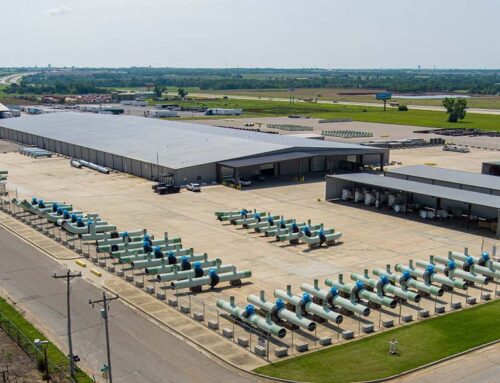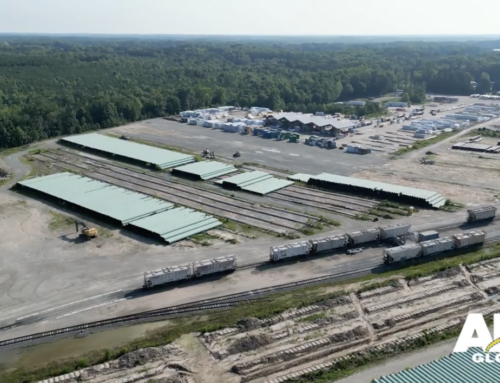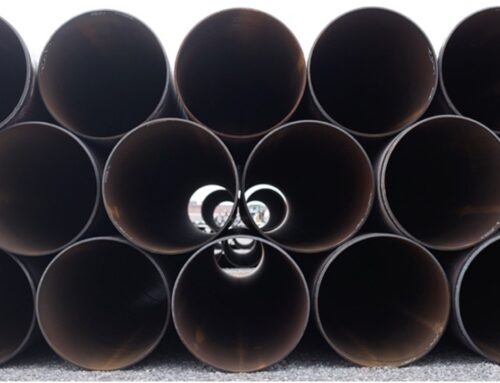Transporting heavy materials over long distances poses significant risks. Pipe can roll off trucks during sharp turns or accidents, causing damage or delays.
Additionally, without proper securing, pipe is vulnerable to damage during transit, leading to costly replacements or project setbacks. Logistical issues also are a threat. Companies big or small need efficient, reliable partners to stay on schedule, which can be challenging with limited resources or competing demands.
Transporting pipe securely isn’t done just to check a box, it’s to save lives. Recently, on U.S. Highway 59 south, a tanker truck entered a northbound crossover and drove straight into the path of a southbound semi-truck carrying multiple 25-foot steel pipes. The driver of the semi lost the load and was temporarily pinned inside the cab. Both drivers survived the crash without serious injuries, but this happy ending isn’t a guarantee.
The pipe lost could have easily struck the drivers or a third-party, or other disasters could have happened. Photos of the crash show pipe in the cab, inches away from the driver’s seat.
It is imperative to follow transportation guidelines when transporting pipe and pipe assets. These guidelines help prevent damage to the pipe and its coating, as well as keep lives safe. Transportation guidelines consist of principles, such as:
- When stacking pipe, the short lengths of pipe should be placed on the top tier.
- Inspectors should be given adequate notice prior to loading and unloading so that inspection of pipe can be completed.
- If damage is identified on pipe or coating, it should be set aside and repaired.
- Pipe interiors and areas where pipe will be laid should be free of debris.
- Proper attachment points must be used.
- The number and placement of hold-down straps should be enough to ensure pipes are secured and in accordance with government regulations and to prevent shifting of the load during transportation.
- Pipe should not exceed 4 feet past the end of the trailer, nor beyond 6 feet from the last supporting separator.
Careful Vetting
It is key to ensure that your logistic experts are thorough and take all necessary steps to properly load your assets. Your logistics team must make sure they have correct equipment to secure the load. All safety gear must be vetted thoroughly prior to loading. Logistics providers must provide open communication about what they need.
Drivers must have the correct insurance, and drivers, trucks, and motor carrier numbers must match.
When it comes to logistics, ensure that your partners are thorough, communicative, transparent and aware of the consequences of logistical issues.
There has been a substantial increase in freight fraud in recent months, known as double-brokering. One industry group estimates this fraud is costing between $500 million and $700 million.
Double-brokering occurs when a driver transfers a load to another trucking company without notifying the shipper. The first carrier profits by giving the load to the second carrier at a lower rate. The load owner is not notified and is suddenly vulnerable to substantial risk.
It is critical to work with trusted logistics experts who make sure that trucks have the correct insurance and drivers and people who are who they say they are. If these don’t match, their load must be denied from getting on the road. Red flags that you are encountering a driver that is attempting to double broker:
- The inability to contact the carrier or original broker.
- Not providing their motor carrier numbers or having incorrect motor carrier numbers.
- Requesting unusual payment methods.
- Unfamiliarity with the details of the load.
Vigilance will be key for anyone looking to avoid falling victim to this scam, which is becoming more and more common.
Operational Efficiency
Beyond vigilance and attention to detail for protecting your load, the drivers, and shippers, continuously seeking to improve the safety of transportation has a positive effect on shipping timelines.
The use of safety mechanisms such as safety racks and following transportation guidelines not only minimizes the risk of accidents but also improves the loading and unloading process. This ensures smoother transportation, allowing logistics teams to maintain a steady flow of materials without disruptions.
Efficient pipe transport reduces downtime, keeps resources on schedule, and improves overall project coordination by preventing bottlenecks caused by transportation issues.
Something as small as an improvement to the racks holding pipe in place can have substantial positive impacts. A small change to our safety racks have allowed us to almost double transportation efficiency, reducing standard delivery time significantly.
This improved tool prevents pipe from rolling off trucks in the event of sharp turns or sudden stops, minimizing accidents, damage and delays. It also allows more pipe to be transported per load.
Ensuring that pipe transportation adheres to strict guidelines helps protect not just the materials but the entire supply chain. This reliable approach to transportation enables companies to maintain consistent delivery schedules and reduces the risk of project slowdowns due to material shortages. With reliable and secure solutions, companies can ensure that their projects remain on track, minimizing the impact of transportation-related disruptions on the broader supply chain.
This article appeared in the December 2024 edition of the Pipeline & Gas Journal.









